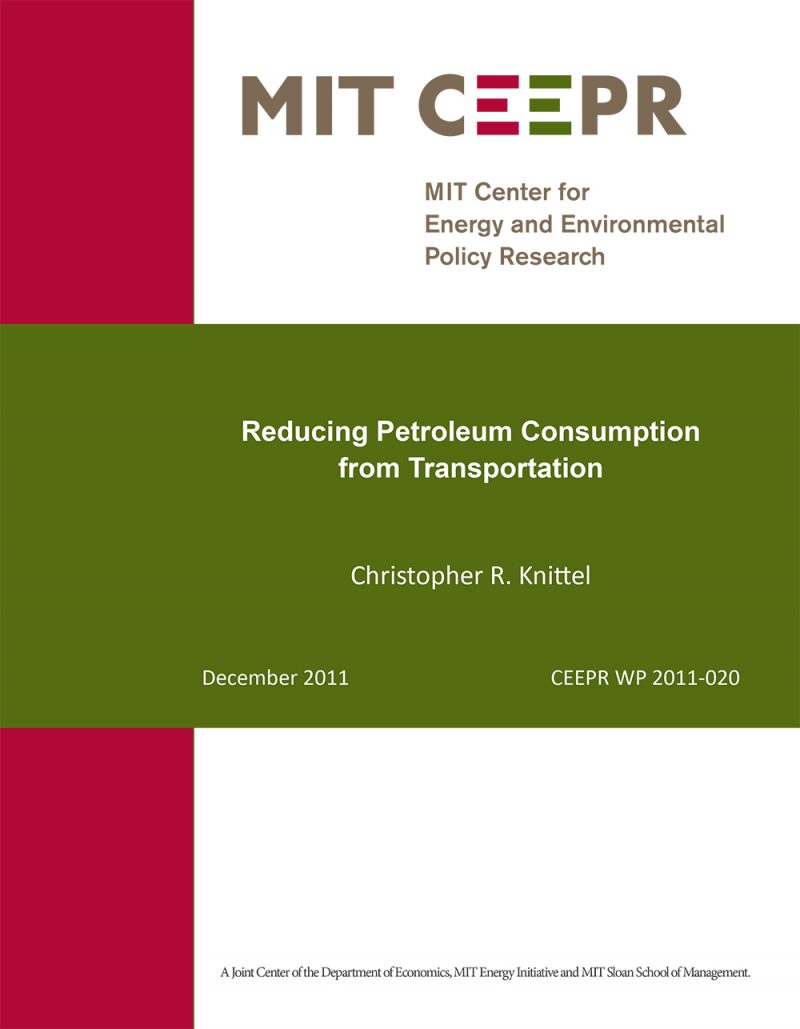Reducing Petroleum Consumption from Transportation
Christopher R. Knittel
December 2011
The United States consumed more petroleum-based liquid fuel per capita than any other OECD- high-income country- 30 percent more than the second-highest country (Canada) and 40 percent more than the third-highest (Luxemburg). This paper examines the main channels through which reductions in U.S. oil consumption might take place: (a) increased fuel economy of existing vehicles, (b) increased use of non-petroleum-based low-carbon fuels, (c) alternatives to the internal combustion engine, and (d) reduced vehicles miles travelled. I then discuss how the policies for reducing petroleum consumption used in the US compare with the standard economics prescription for using a Pigouvian tax to deal with externalities. Taking into account that energy taxes are a political hot button in the United States, and also considering some evidence that consumers may not correctly value fuel economy, I offer some thoughts about the margins on which policy aimed at reducing petroleum consumption might usefully proceed.



